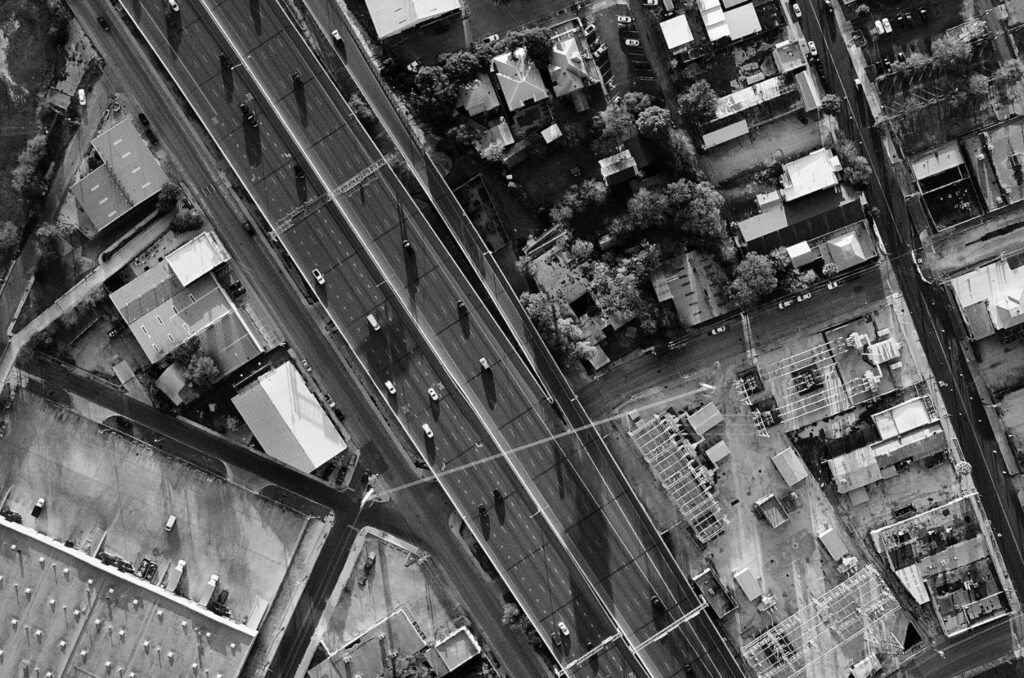In March 2024, the Office of the Secretary at USDOT announced awards for the Reconnecting Communities Program. This program is intended to improve access to daily needs and repair past harms by removing or mitigating divisive infrastructure, particularly in disadvantaged communities. This year, funding was expanded from last year’s awards, but will these funds meet the program’s goals?

As we explained in our report Divided by Design, low-income communities and communities of color have been and continue to be disproportionately harmed by our approach to transportation in the United States. Past decisions, including routing the Interstate Highway System through communities of color, dividing and often demolishing them in the process, still shape our built environment. Without change, people living in communities divided by harmful infrastructure are more likely to be exposed to air pollution, face an increased risk of being hit and killed while walking, and experience reduced access to jobs and opportunity.
A small program to knit communities back together
Last year, we reviewed the first round of awards from the Reconnecting Communities Pilot Program, a discretionary grant program aimed at mitigating the damage caused by divisive infrastructure. The second round of awards, announced this year, was combined with the Neighborhood Access and Equity (NAE) program, forming the Reconnecting Communities and Neighborhoods Program (which we’ll call the Reconnecting Communities Program). It’s important to note that because NAE funds were allocated all at once, these past two rounds of investment represent the majority of federal funds dedicated to reconnecting communities projects. So how is this investment going?
Many federal infrastructure grants and formula funds go toward highways in some capacity—our recent analysis of state spending found that about 25 percent of federal formula funds are being used for highway expansions. By comparison, safety projects and reconnection projects do not receive the same amount of investment or attention. The Reconnecting Communities Program, though relatively small (roughly $3.3 billion this year) compared to federal formula programs, presents an important opportunity to finance projects that prioritize reconnecting communities.
A lot of the communities that were awarded funding utilized their awards for the Reconnecting Communities Program’s exact intent—they’ve begun work on constructing pedestrian bridges or bike infrastructure, or they’re using the funds to study the feasibility of new routes to bike, walk, and use public transit in their cities. For example, the City of Milwaukee received a $36 million construction grant to build bike and pedestrian infrastructure, as well as transit, along its 6th Street corridor, widened in the 1960s to accommodate vehicle flow from I-94 and I-43, two divisive highways that demolished Black and Brown homes in the mid-1900s. The new project will allow the surrounding neighborhoods to access jobs and services downtown. The Port of Los Angeles received a $5 million grant for a waterfront pedestrian bridge. This project aims to construct a pedestrian bridge over two main freight line tracks, connecting the community to greenspace along the water.
Perpetuating divides
Despite many of these projects using their grant money towards needed improvement and connections, some of the grant funding will not be fully utilized to connect communities. For example, projects that add safety features for people walking and biking around large, dangerous roadways are improvements overall, but they won’t go far enough to truly address divisive infrastructure. These projects would likely be a better fit for larger, more flexible funding sources than a small, specific program like the Reconnecting Communities Program. By using reconnecting communities funds to skirt around divisive infrastructure rather than address it head-on, we risk missing out on more ambitious initiatives to reduce and repair harm.

One of the more egregious examples of an awarded project would be the I-5 Rose Quarter Improvement Project in Oregon. The planned expansion of I-5 in Rose Quarter has faced resistance for years, including from young climate activists at the nearby middle school already exposed to harmful air pollution from the existing highway. ODOT’s plans to cap the highway (while still expanding it) received $450 million in funding from the Reconnecting Communities Program. In this case, the program will mitigate a new harm, not repair a mistake from the past.
The I-5 project is not alone—America Walks identified four projects that received funding from the Reconnecting Communities Program that will ultimately lead to more displacement and approach reconnecting communities as an afterthought. The program is intended to address past divides, but as current decision-making continues to perpetuate harm, this small federal program must bridge an ever-widening gap.
Looking ahead
The Reconnecting Communities Program represents a start to bringing communities together and supporting safe, low-cost, and low-emission travel. The program is still new, and the next reauthorization will present an opportunity to strengthen and expand it. In the meantime, USDOT has an opportunity right now to improve on the substance of the projects that are awarded. USDOT should place a larger emphasis on purposefully moving away from highway systems and provide examples of projects that improve safety and connectivity, such as bike infrastructure and bus rapid transit. In addition, advocacy at the local and federal levels can continue to raise awareness of the importance of connecting communities and building safe streets.
Our current transportation system prioritizes the movement of vehicles over all else, and communities of color and low-income communities have often paid the price. To make a substantial impact in addressing community divides, local and federal agencies will need to take a closer look at how their existing models and practices enable further harm, and work to reshape the system for the better. Learn more here.
The post Two years in, progress still needed for reconnecting communities appeared first on Transportation For America.









